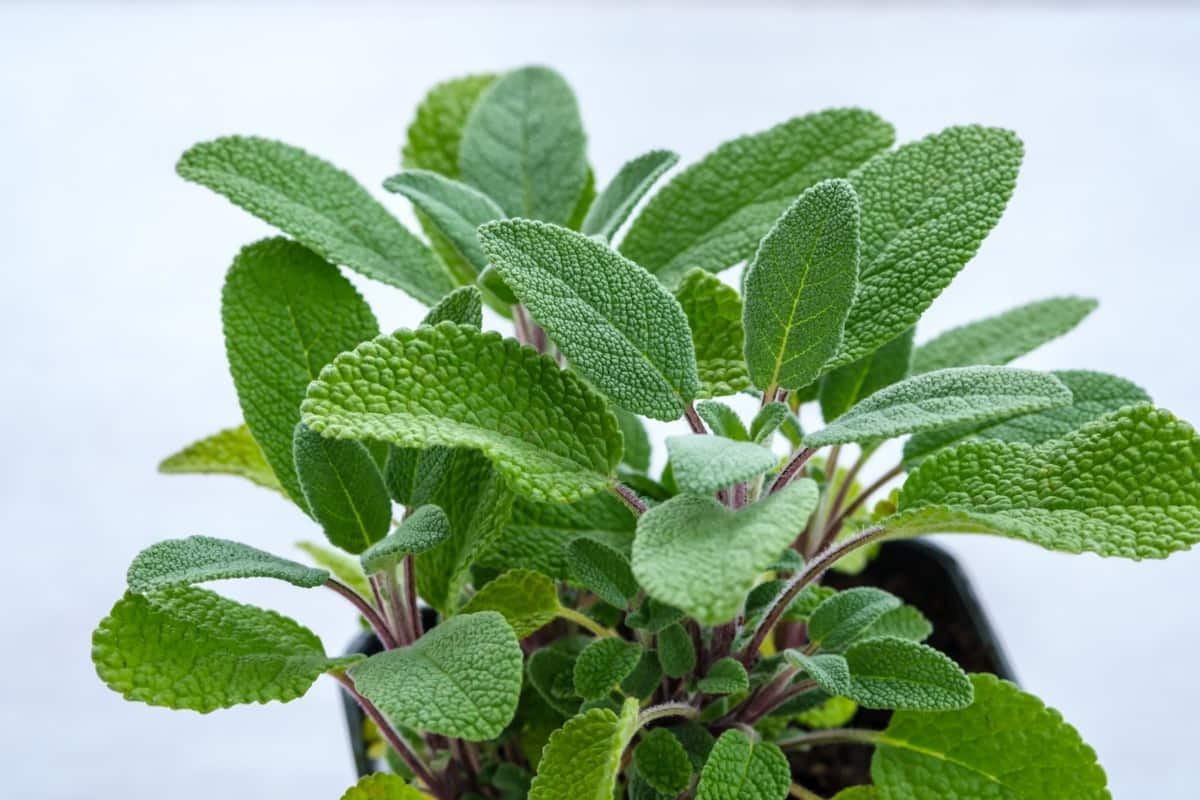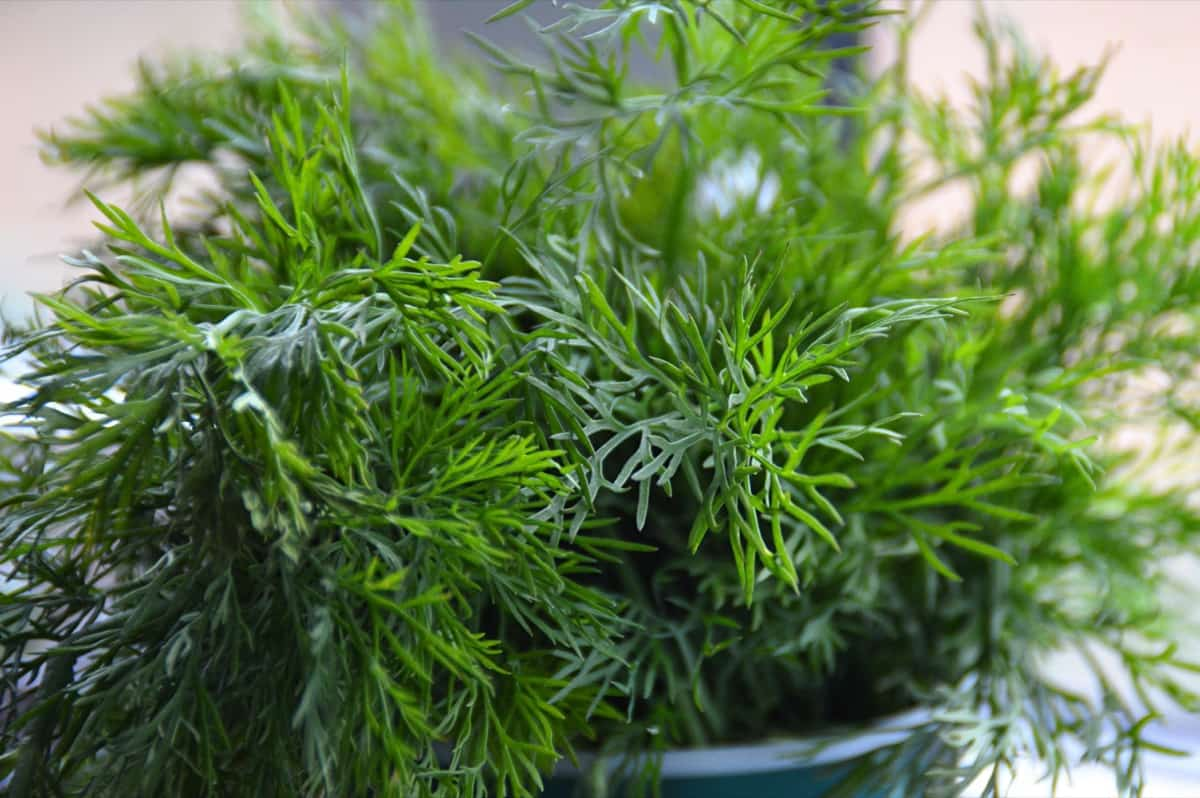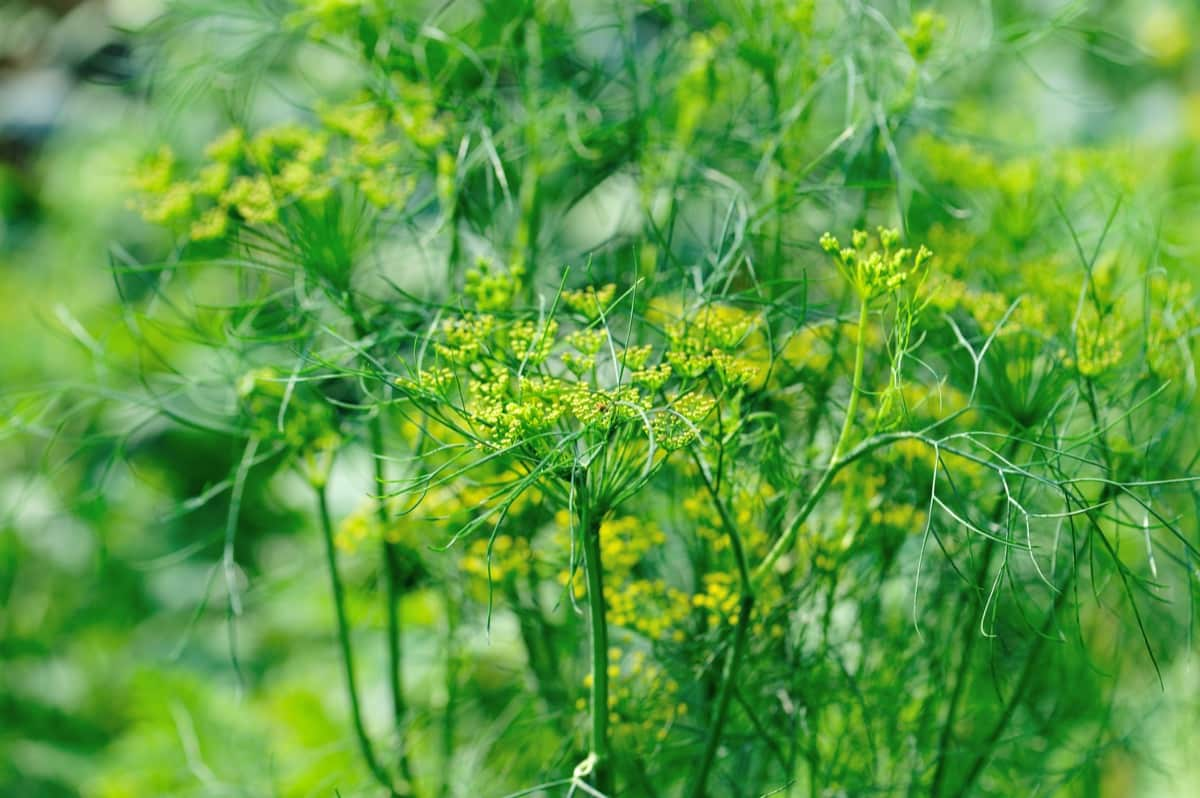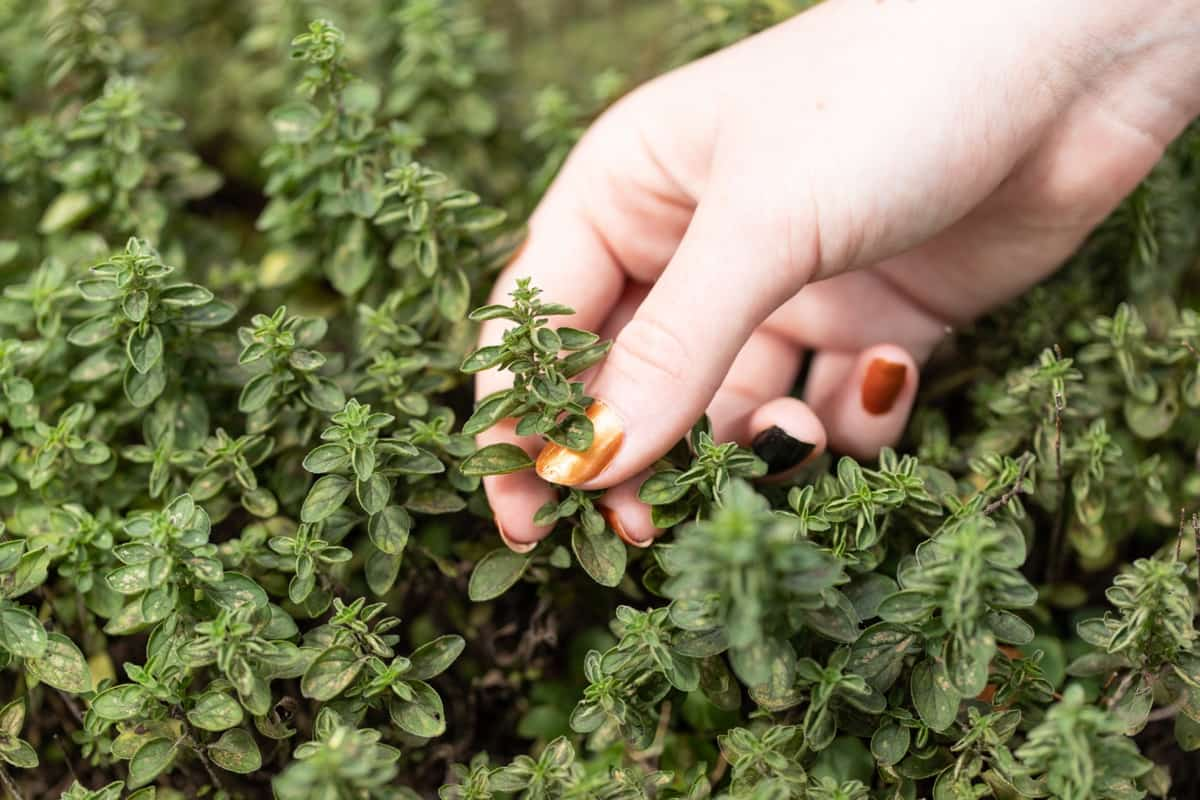Fast-growing herbs are especially beneficial for those who want quick results without waiting too long. You can easily grow your herb garden and enjoy fresh ingredients in your cooking. These plants are perfect for those who want freshness and flavor to their meals without waiting too long to mature. One thing that sets fast-growing herbs apart from other plants is that they can be grown in various settings.

There’s always room for fresh herbs, whether you have a spacious outdoor garden or just a few pots on your windowsill. Additionally, many fast-growing herbs can be harvested multiple times throughout the season. This means you’ll get plenty of use from each plant before it disappears. Fast-growing herbs offer an easy way to incorporate fresh flavours into your cooking with minimal effort.
Top 10 Fast-Growing Herbs You Can Grow from Seeds
Dill
When growing Dill from seeds, you should plant them directly into the soil where they will grow as they do not transplant well. Dill prefers full sun and fertile soil with good drainage. If you plan on growing Dill from seed, it’s essential to know that germination can take up to 14 days. Dill prefers well-drained soil with plenty of sunlight and moderate water levels.
In case you missed it: How to Grow Dill from Seed to Harvest: Soil, Propagation, Planting, and Care

Once your Dill plants reach maturity, typically 70-80 days after planting, you can begin harvesting their leaves or seeds. Once matured, you may harvest the leaves of the Dill plants at any time during their growth cycle for immediate use or drying. Ensure you only cut what you need so your plant continues producing new foliage.
Sage
Sage is an evergreen plant that offers various benefits both in the kitchen and outside. Its leaves have a slightly bitter, warm flavour that adds depth to many dishes. Sage has several medicinal properties too. Growing Sage from seeds is relatively easy. Start by planting seeds indoors during early springtime, then transplant them outside when they are about 3 inches tall in well-drained soil under full sunlight.
Sage also thrives in containers placed near windowsills or balconies. Germinating Sage seeds can take up to two weeks and should be done in well-draining soil with consistent moisture levels. Once the seedlings are grown, they can be transplanted outdoors or into larger containers. Sage plants typically reach maturity within 70-80 days after germination. The plant produces small purple flowers during summer, attracting bees and butterflies.
Harvesting Sage requires careful attention as it must not be over-picked; otherwise, it may harm the plant’s growth cycle. The best time to harvest Sage is before its flowering stage when the essential oils are at their peak concentration. One thing to note while growing Sage plants is not overwatering them as this may lead to root rot- water only when the topsoil feels dry. With proper care and attention, your Sage crop will keep providing fresh herbs for years.
Fennel
Fennel is an herb used for medicinal and culinary purposes for centuries. It’s a flavorful and aromatic plant that adds a unique taste to many dishes. One of the benefits of growing Fennel is how quickly it grows from seed, making it perfect for those who want fast results. The seeds should be planted in well-draining soil with full sunlight exposure. Regarding growing Fennel from seed, it’s important to note that the germination process can take up to 14 days.
In case you missed it: Fennel Gardening for Beginners, How To Start

Once the seeds have sprouted into seedlings, they should be transplanted into well-draining soil with plenty of sunlight. Fennel plants require regular watering but do not overwater them. Fertilizing every few weeks will help ensure healthy growth and development of the plant. Harvesting Fennel bulbs typically takes around three months after planting. Growing Fennel is an easy way to add flavor to your meals while reaping its potential health benefits.
Parsley
One of the unique things about Parsley is that it can be grown indoors and outdoors. This makes it the best choice for those with limited space or living in apartments without garden access. Parsley is the most popular herb globally, known for its unique flavour and health benefits. It’s an easy-to-grow herb that can be planted from seeds or seedlings. The germination time for Parsley seeds is usually around 2-3 weeks. Once the seedlings have sprouted, keeping them well-watered and in a sunny location is essential.
In case you missed it: How to Grow Parsley from Seed: A Detailed Guide to Planting to Harvest

Parsley grows best in rich, well-drained soil with plenty of organic matter. One thing to note about Parsley is its long growing season. It can take several months to reach maturity, so patience is key when growing this herb. However, you’ll be rewarded with a plentiful harvest once it’s fully grown. Parsley seeds are easy to grow and germinate quickly, making them perfect for beginners. Once planted, Parsley will grow throughout the year if it receives adequate sunlight and water. Parsley is a versatile herb with numerous culinary uses and potential health benefits.
Basil
Basil seeds typically germinate within seven to ten days after sowing, while harvesting can begin three to four weeks days later. Basil grows best in warm weather conditions with ample sunlight exposure. It requires regular watering but must be prevented from becoming waterlogged. In addition, planting Basil near other herbs or vegetables can help repel insects and promote healthier growth.
Basil is also straightforward to grow from seeds, making it the best choice for beginners who want to start their herb garden at home. You only need some potting soil, seeds, and a container with drainage holes. Once planted and cared for properly, Basil will quickly sprout leaves and can be harvested within weeks of planting.
Chervil
Chervil is easy to grow from seeds, making it the best choice for beginner and experienced gardeners. It prefers cooler temperatures, so sowing seeds in early spring or late summer is best. Chervil grows best in cool weather conditions and thrives in moist soil with partial shade. The germination period of this herb is between 10-14 days, after which it takes about 45 to 60 days to reach maturity.
To grow Chervil from seed, plant the seeds about ¼ inch deep in well-drained soil with full sun exposure. Once established, Chervil requires little maintenance other than regular watering during dry periods. Chervil is an excellent herb in your garden due to its ease of growth and versatile culinary applications.
Mint
Mint can be easily grown from seeds. It thrives in moist soil and partial shade, making it an excellent addition to any garden or indoor herb collection. Mint seeds usually take 7 to 14 days to germinate when planted indoors. If you’re growing outdoors, waiting until the soil temperature reaches 18°C before sowing the seeds is best.
When growing Mint from seed, plant them in well-draining soil with plenty of organic matter. With proper care, your Mint plants will grow quickly and provide fresh leaves all season. Mint thrives in well-draining soil with plenty of sunlight and moisture. When harvesting Mint leaves, you can start picking them once the plant has reached a height of at least 6 inches.
Oregano
Oregano is a fast-growing herb that can be easily grown from seeds. To grow Oregano from seed, start by sowing the seeds in well-draining soil with good sunlight. Once they sprout, thin out any excess plants to ensure proper spacing for growth. The germination period for Oregano seeds varies from 7 to 14 days, depending on soil temperature, moisture level, and light exposure. Once the seedlings emerge, you can transplant the seedlings into individual pots or the garden bed once they emerge.
In case you missed it: Growing Oregano, Planting, Care, and Harvesting

Oregano needs well-drained soil with moderate fertility and full sunlight exposure for optimal growth. During its growing season, it requires regular watering but does not tolerate waterlogging or over-fertilization. Harvesting of Oregano leaves should start when the plant reaches at least 6 inches tall. The best time to harvest is early morning when the essential oils are at their highest concentration. Cut down stems with a sharp knife or scissors about an inch above ground level to harvest Oregano leaves. Growing your Oregano is an easy way to add flavor to your meals while reaping some potential health benefits at the same time.
Coriander
Coriander is an herb with a unique flavor that can add depth to any dish. Growing Coriander from seeds is relatively easy as it requires well-draining soil and moderate sunlight. Coriander needs consistent watering, especially during the hot summer when it tends to bolt quickly. When it comes to growing Coriander from seed, it’s essential to remember that this plant doesn’t like transplanting.
So, you’ll want to sow the seeds directly into your garden bed or container where they will grow. The germination time for Coriander seeds is usually between 7-10 days after sowing. Coriander grows best in well-draining soil with plenty of sunlight and moisture. Once the plants start growing their first true leaves, thin them out so they’re about 6 inches apart.
Harvesting your Coriander is easy too; snip off what you need from the top of the plant. You can continue harvesting throughout its growth cycle until it starts flowering, at which point its leaf quality may deteriorate somewhat. One of the best things about growing Coriander at home is using all parts of the plant – leaves and stems. Growing this versatile herb from seeds will enhance your culinary skills and overall well-being.
Chives
Chives have long, slender leaves and a delicate flavour perfect for adding a light onion taste to dishes. When it comes to germination, chive seeds take approximately 7-14 days to sprout when planted in moist soil at room temperature. Once they have grown about 2 inches tall, you can start harvesting them by snipping off the leaves at the base of their stems. Chives thrive in cooler temperatures and require frequent watering.
In case you missed it: How to Grow Chives from Seed: A Detailed Planting to Harvesting Guide for Beginners

Be sure not to let their soil dry completely between watering, or they may wilt or even die. Chives can be grown indoors or outdoors in pots or directly in the ground. Plant the seeds 1/4-inch-deep in rich soil with good drainage and keep them moist until they germinate. Once established, Chives will continue to grow year after year without much maintenance other than regular watering and occasional fertilization. In addition to being used fresh or dried as an herb in cooking, chive flowers make attractive garnishes for salads and other dishes.
Conclusion
Growing herbs from seeds is an enjoyable and rewarding activity that anyone can do. By planting these fast-growing herbs, you will have fresh ingredients for your dishes in no time. Not only does it provide you with fresh ingredients for your cooking, but it also allows you to connect with nature and appreciate the beauty of herbs. Remember that each herb has a unique growth cycle and requirements, so research before starting your garden. With proper care and attention, you can enjoy an abundance of culinary delights straight from your garden all year round.
- Gongura Seed Germination and Planting Methods
- Cabbage Seed Germination and Selection
- Broccoli Seed Germination and Selection
- Asparagus Seed Germination and Variety Selection
- Seasonal Flower Gardening: Best Practices for Spring, Summer, Fall, and Winter
- How to Grow Hibiscus from Flower
- Plantation Ideas for Home Decoration: A Beginners Guide
- Flower Garden Designs and Layouts for Beginners
- Planting and Spacing Techniques in Papaya: A Beginner’s Guide
- Growing Gold: Essential Techniques for Planting Pineapples
- How to Make Kalanchoe Plant Bushy: Home Remedies and Solutions
- 11 Reasons Why Your Gardenia is Not Blooming: Home Remedies and Solutions
- Eco Elegance: The Guide to Designing a Drought-Tolerant Landscape
- Gardening on a Slope: Strategies for Hillside Landscaping
- Nourish and Flourish: Top Organic Mulches for Thriving House Plants
- Everything You Want to Know about Indian Mogra Flower: Discover Uses and Growing
- Green Thumb Success: Expert Tips for Cultivating Greenhouse Pumpkins All Year Round
- Maximize Growth & Flavor: The Ultimate Guide to Companion Planting in Herb Gardens
- How to Control Rhododendron Problems Naturally: Home Remedies and Organic Ways to Fix Them
- Natural Magic: The Remarkable Benefits of Cinnamon for Plants
- Best Steps to Revive Dying Tulip with Natural and Organic Treatment
- 10 Reasons Why Your Angel Trumpet is Not Blooming: Remedies and Treatment
- How to Fix Periwinkle Leaf and Flower-Related Problems: Natural Remedies and Solutions
- How to Fix Zinnias Leaf and Flower Problems: Discover Natural and Home Remedies
- Organic Steps to Induce Lemon Tree Flowers: A Comprehensive Guide
- Bloom Booster: Crafting the Perfect Homemade Bougainvillea Fertilizer
- Optimizing Growth: A Guide to Applying NPK Fertilizer for Potted Plants
- 10 Best Homemade Fertilizers for Rubber Plant: DIY Recipes and Application Method
- How to Boost Female Pumpkin Flowers: Effective Steps for More Flowers and High Yields
- Transform Your Indoor Garden: Top Benefits of Pink Salt for Houseplants
- 10 Best Homemade Fertilizers for Peacock Plants (Calathea): Easy DIY Guide
- Unlock Blooms: 9 Reasons Why Your Potted Chrysanthemum is Not Blooming
- 8 Reasons Why Your Potted Hibiscus is Not Blooming: Fix it with Simple Solutions
- Unlock Blooms: 9 Key Reasons Your Potted Frangipani Won’t Flower
- 10 Reasons Why Is My Ice Plant Not Blooming: Remedies and Treatment
- 10 Reasons Why My Potted Hydrangea Not Blooming: Treatment and Remedies